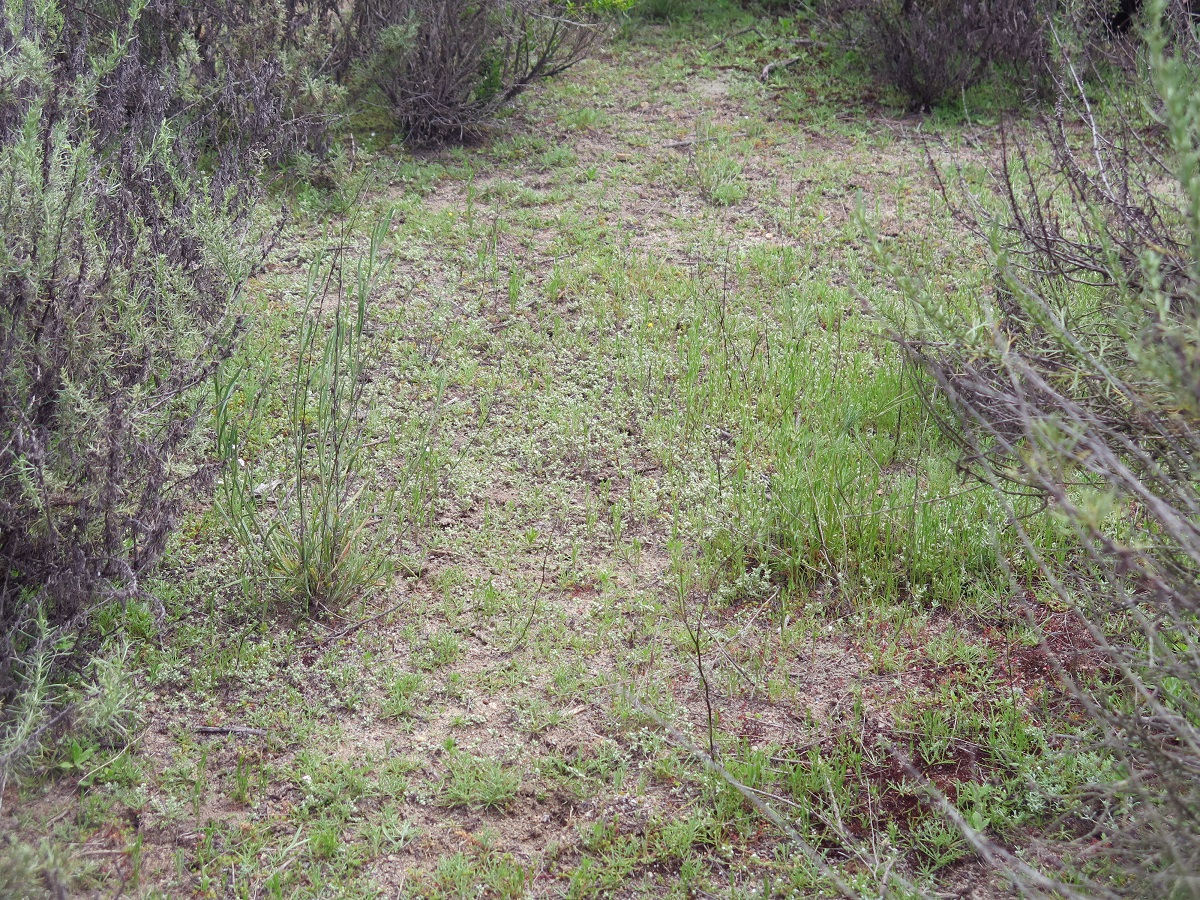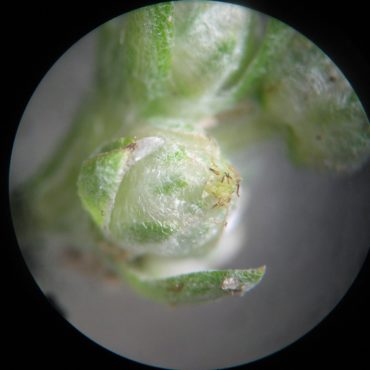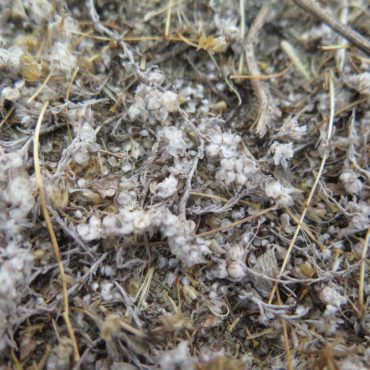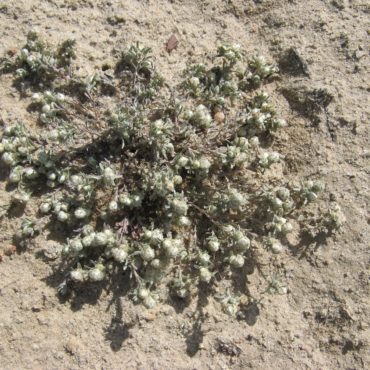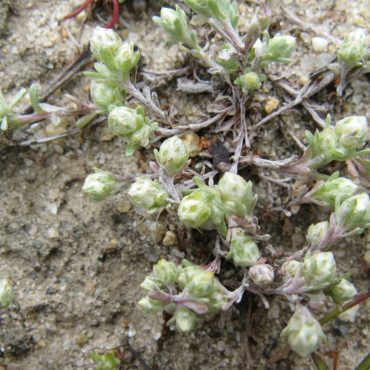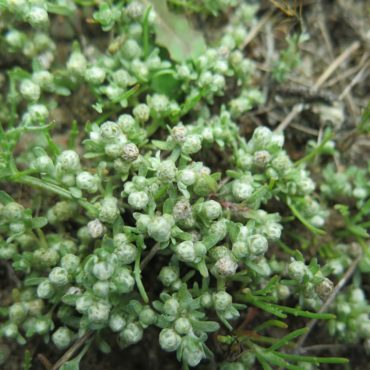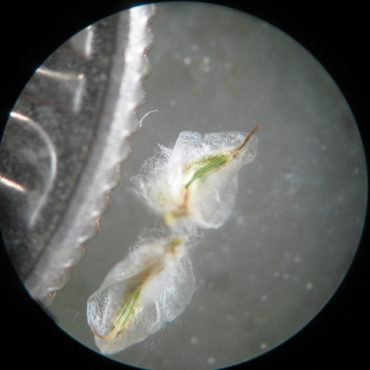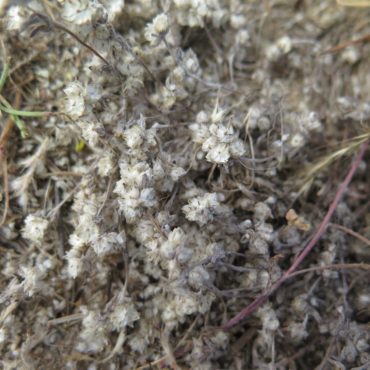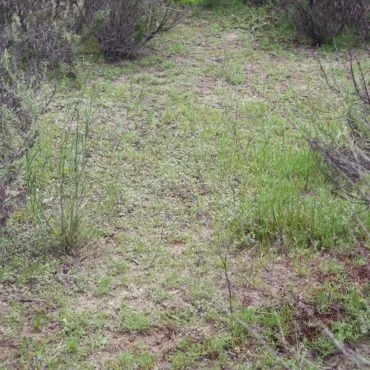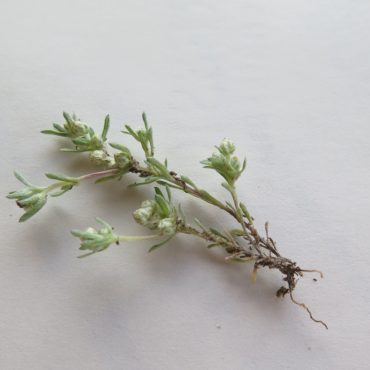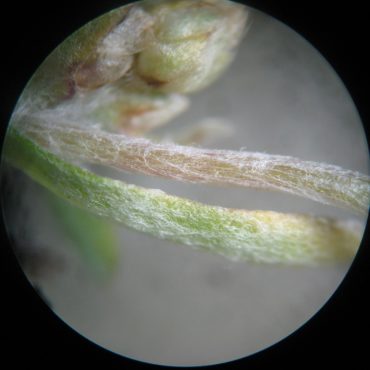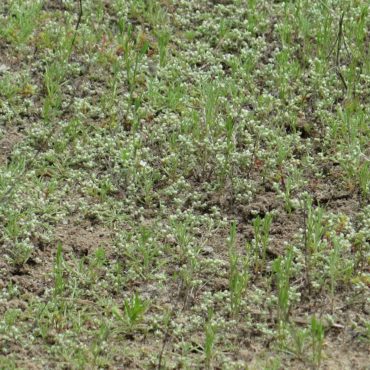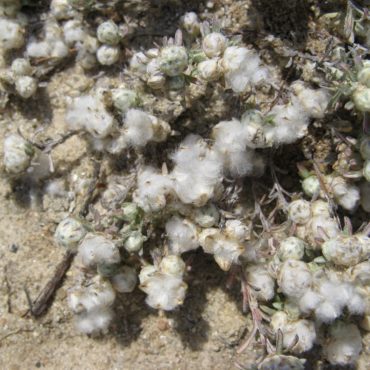Everlasting nest straw is a tiny annual plant that, except for size, resembles the related everlastings (e.g. Pseudognaphalium spp.). The plant is reported up to eight inches (20 cm) high but ours rarely exceed four inches. The plant is gray-green, with long, white hairs. Stems are upright or sprawling, branched or not. Leaves are sessile, narrowly oval, less than ½ inch (1.4 cm) long, often with a minute tip.
Many of the floral components are difficult to observe without magnification. The rounded inflorescence consists of small clusters of spherical flower heads. A flower head is made up of individual florets, which are supported by a common base, the receptacle. The most obvious features of a flower head are the paleas, scale-like structures, each of which is associated with a single floret. A palea is woolly with a central green area on the outer surface and silver, membranous marginal wings that tend to obscure the long hairs. A palea is concave inward and encloses the floret. Individual florets are rarely, if ever, apparent without dissection. Their presence may be indicated by the tips of stamens or pollen, or forked styles protruding from between the paleas.
Florets are either male or female, with both present in a flower head. The receptacle is long and narrow, hidden by the palea. Corollas are long, slim, symmetrical tubes with three to five small lobes. One to five central florets are functionally staminate with four to five stamens forming a column around the sterile pistil. Male florets are surrounded by 12-17 pistillate florets, with inferior ovaries and forked, thread-like styles that are pale, turning dark on maturity. In southern California, plants grow in January and February, starting to flower as the soil dries out, often in March and April.
When the tiny seeds ripen the entire flower head falls from the plant, breaking apart and releasing a loose matrix of paleas and seeds. Soon, the ground is covered with shattered, dry, woolly flower parts, looking like the gray, fluffy debris that collects under a bed.

